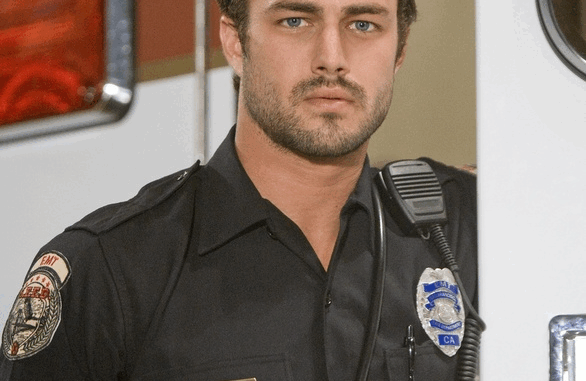
When Chicago Fire first hit the screen, Taylor Kinney quickly became the beating heart of the show’s emotional landscape. As Lieutenant Kelly Severide, he wasn’t just the tough, capable firefighter — he was the layered, deeply human anchor for many of the series’ most heartfelt arcs. But what many fans never realized was just how much of Kinney’s on-screen depth came from moments far away from the cameras. His personal life, with all its highs, heartbreaks, and unexpected turns, became the invisible script shaping the man audiences saw on screen.
In the early seasons, Kinney’s portrayal of Severide carried a particular edge — the charm of a man who could win any fight but also the vulnerability of someone carrying an invisible weight. That vulnerability wasn’t just good acting. At the time, Kinney’s personal relationships, including his high-profile engagement to a global superstar and the eventual breakup, added an unspoken ache to his performances. It wasn’t deliberate method acting, but his life off-screen naturally bled into his work. When Severide navigated love, loss, and the sacrifices of duty, Kinney didn’t have to imagine what those moments felt like — he knew.
Crew members have quietly said that some of the most emotionally charged scenes in Chicago Fire came during moments when Kinney himself was processing real emotional shifts in his life. There’s a subtle difference between acting a scene and living it, and Kinney, without ever breaking professional boundaries, carried those lived emotions into the firehouse. When Severide grieved, it felt raw. When he smiled after a win, it felt earned. That’s the kind of authenticity you can’t fake.
Beyond romance, Kinney’s personal values also shaped Severide’s moral compass. His off-screen passion for causes related to first responders and his close friendships with real-life firefighters deepened his understanding of the stakes of the job. While many actors rely solely on scripts and research, Kinney sought out personal connections, visiting firehouses, attending charity events, and listening to real stories of sacrifice and bravery. These moments didn’t just prepare him for his role — they redefined it.

Of course, life doesn’t just influence art in the heavy moments. Friends from the set have admitted that some of the banter and camaraderie between Severide and his fellow firefighters came directly from Kinney’s real personality. He’s known for lightening the mood in tense moments, throwing in a playful jab or an unplanned laugh — things that often made it into the final cut because they felt so natural. That balance of gravitas and charm became a signature of his character, and it’s a balance that started with the real man behind the role.
In recent years, as Kinney stepped away from Chicago Fire temporarily for personal reasons, fans got a glimpse of just how intertwined his life and the show had become. His absence left a noticeable void not just in the storylines, but in the emotional heartbeat of the firehouse. And when he returned, it wasn’t just Severide who had changed — it was Kinney himself. The depth in his eyes during those comeback episodes carried the weight of someone who had lived, grown, and perhaps healed a little.
It’s a rare thing in television for an actor’s personal journey to so deeply influence a character without blurring the lines entirely. But Taylor Kinney managed it with grace. His life didn’t just inspire a few plotlines — it shaped the very soul of Chicago Fire. Every rescue, every loss, every quiet moment in the firehouse kitchen — they all carry echoes of the man who lived more than one life at once: Taylor Kinney the actor, and Taylor Kinney the man navigating love, loss, and loyalty in the real world.
And maybe that’s why fans connect so deeply with Severide. Because somewhere in those lines, in that smoke-filled haze, they can sense the truth: the courage, the heartache, and the hope aren’t just in the script — they’re in the man himself.
